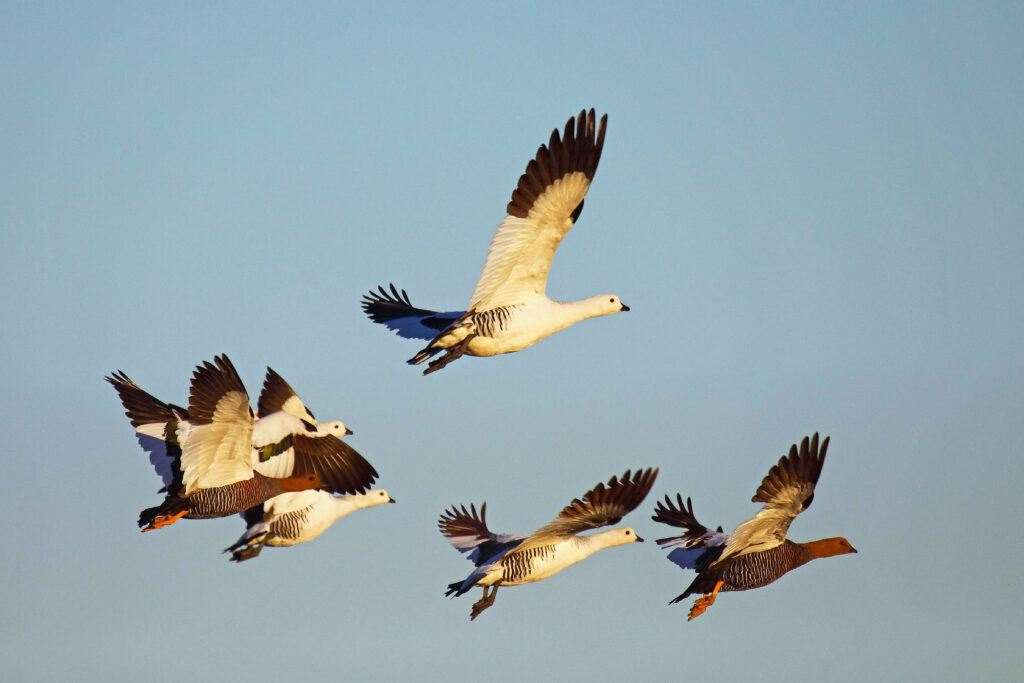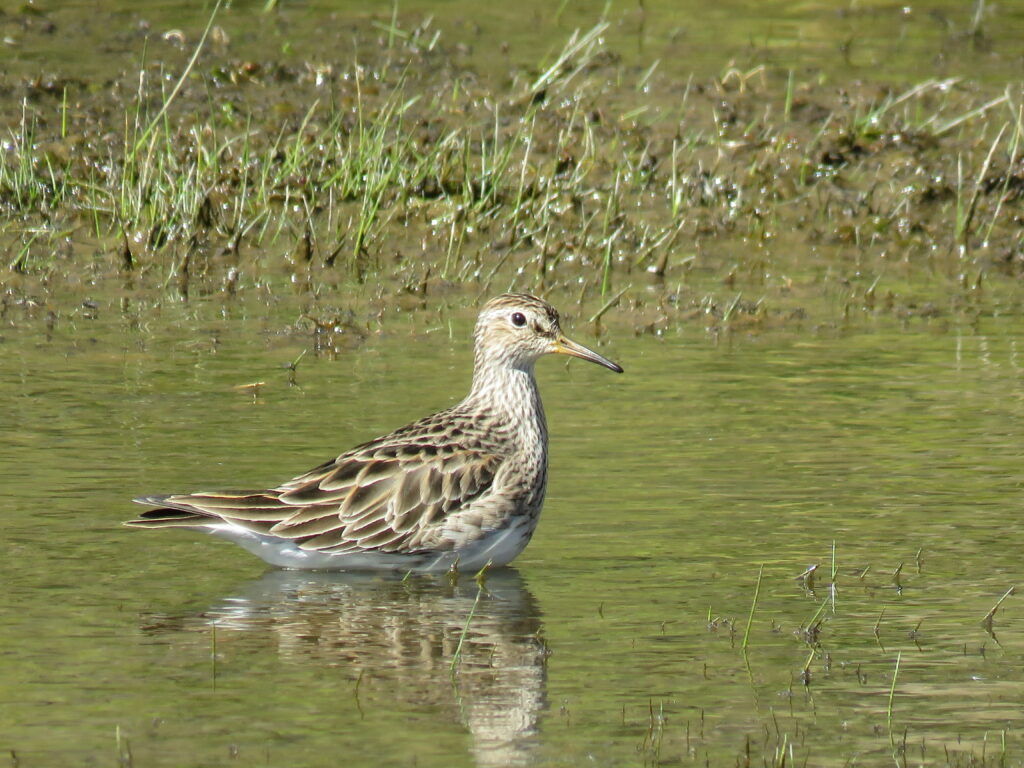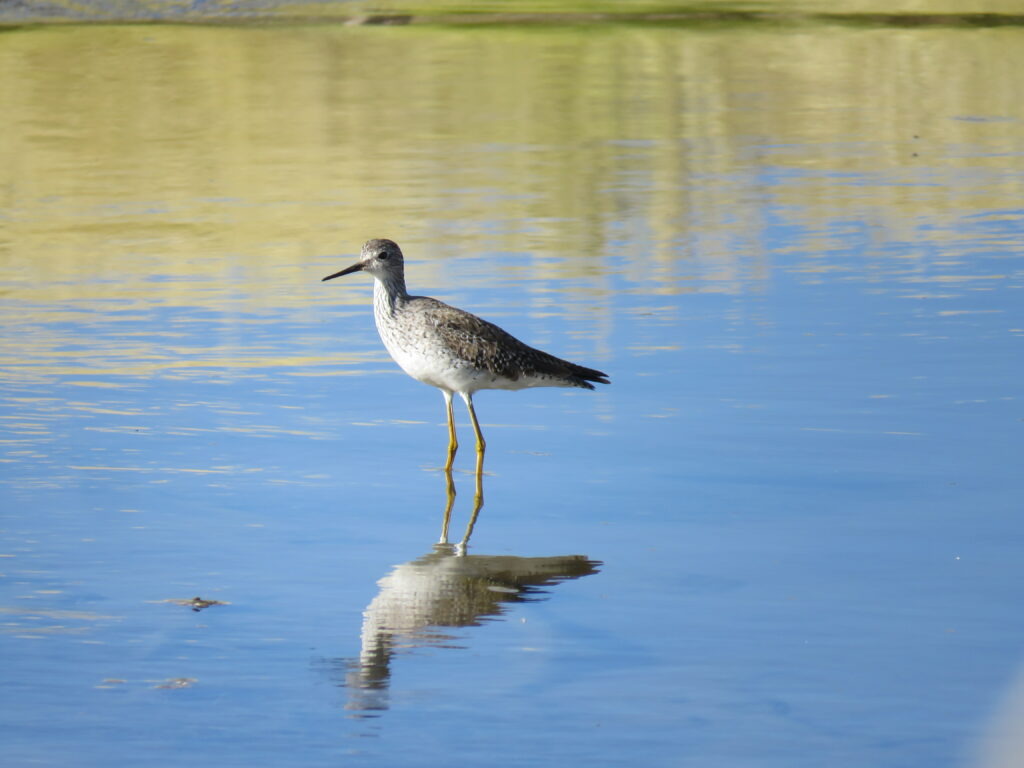
Combating threats to endangered birds on the Americas flyway
-
Biodiversity
-
Climate change
The Americas hold three of the world’s nine major migratory bird flyways: the routes that migratory birds take between their breeding and wintering grounds. The region is home to more than 2,000 species of bird, making it the world’s most species-rich flyway zone. Crossing 35 countries and spanning the Arctic Circle to Tierra del Fuego in Argentina, each year the three flyways which make us the overarching Americas flyway – the Pacific, Midcontinental, and Atlantic flyways – provide crucial resting and feeding points for more than a billion birds before they embark on the next leg of their journeys.

Migratory shorebirds like ducks, rails and sandpipers stand out among waterbirds because many of them breed in the tundra of the Northern Hemisphere and then migrate south to spend the non-breeding season in the coastal and inland wetlands of South America,” says Daniel Blanco, regional director for Latin America at Wetlands International. “During the annual migration, they congregate in large numbers in a few key sites, where they find food and roost. Today many of these sites are lost or degraded, which explains why many shorebird populations are in marked decline.
“Given temperature changes prompted by climate change, fluctuations are being observed in the annual migration cycle and in the use of non-breeding stopover sites by many species”, continues Blanco. “This is revealed by changes in the number of shorebird species at the different sites.”

To restore and maintain the ecological integrity of flyways, Wetlands International has set up several projects operating both regionally and internationally:
Census of Waterbirds
We coordinate one of the largest and longest-running monitoring programmes in the world, the International Waterbird Census (IWC). The IWC is a monitoring programme operating in 143 countries to collect information on the numbers of waterbirds at wetland sites. There are five separate regional schemes of the IWC, covering the major flyways of the world, including the Neotropical Waterbird Census in South America. Data is collected from more than 300 wetlands in this region twice yearly, in February and July. The following countries take part: Argentina, Bolivia, Brazil, Chile, Colombia, Ecuador, Paraguay, Peru, Uruguay and Venezuela.
Geoportal of migratory Austral Geese
This interactive online tool was designed to support decision-making regarding the development of wind farm projects and the conservation of Austral geese (Chloephaga spp.) in southern Argentina and Chile.
The geoportal focuses on three species of geese: the Ruddy-headed, Ashy-headed and the Upland Goose. The species’ migratory paths share similar air space with wind farms being developed along Patagonia in Argentina and Chile, creating potential risk conditions for these birds. The information offered in the geoportal aims to contribute to the knowledge of these species and encourage the adoption of more sustainable choices by those designing and choosing sites for wind farms. The geoportal is a crucial resource since green energy production is in the government plans of both Argentina and Chile, countries that share Patagonia, a fertile breeding area for Austral geese. The geese migrate northwards in winter, settling in the south of the province of Buenos Aires. They’re currently under threat and among them is an endangered species, the Ruddy-headed goose (Chloephaga rubidiceps), which is why their conservation is so important.
Conservation of Migratory Shorebirds project

This project, a collaboration between Wetlands International and Aves Argentina (a member of Birdlife International), aims to protect critical habitats for migratory shorebirds in five key sites in Argentina. It works to raise awareness of species like Wilson’s Phalarope – a grey and brown shorebird whose female pursues the males for mating. Once the females lay their eggs, they then migrate southwards, leaving the males to incubate the eggs. Then there’s the Greater and Lesser Yellowlegs. “The migration patterns of the Yellowlegs are spectacular “In a year, Lesser Yellowlegs are capable of flying some 30,000 kilometres.”
Through this project, we’re developing mechanisms to recognise and protect the key sites used by these birds, all the while involving community members in their conservation.
Global change
Wetlands International is also campaigning for change at the international level, calling on governments across the globe to adopt bold and quantifiable targets focused on wetland wildlife hotspots, including flyways, within their National Biodiversity Strategies and Action Plans (NBSAPs).
